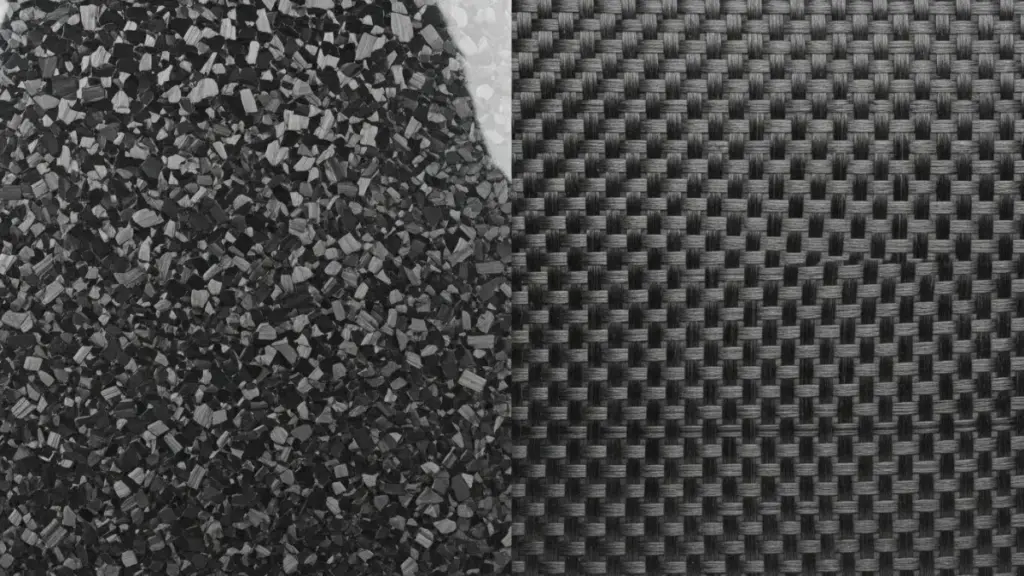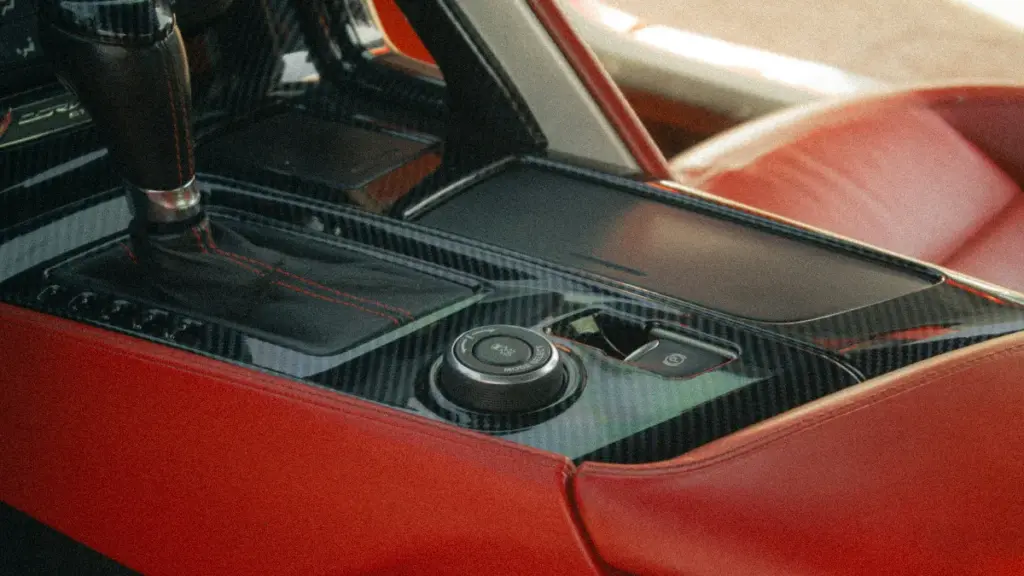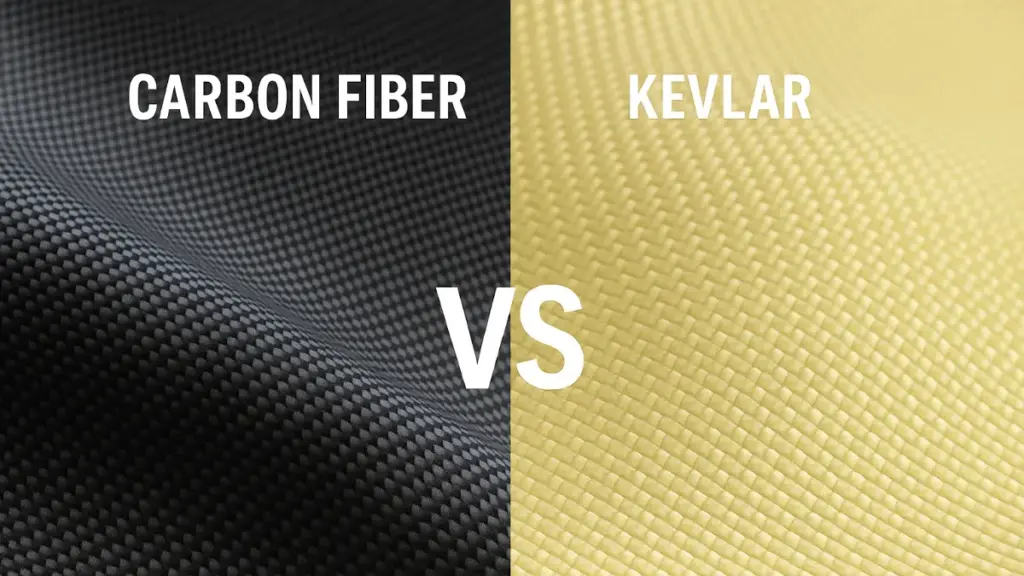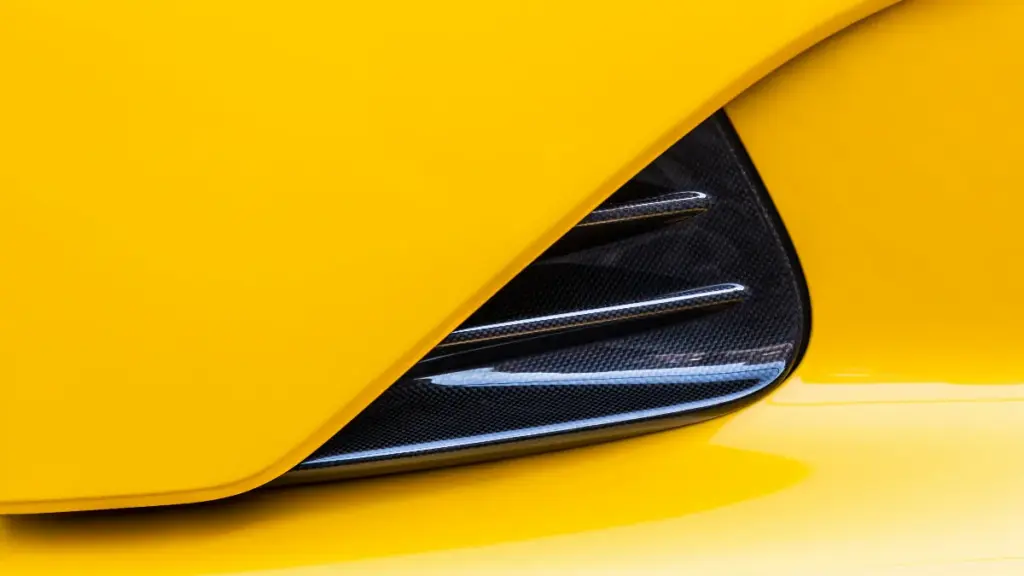
fonte: pinterest
La fibra di carbonio è diventata uno dei materiali principali utilizzati negli sport motoristici moderni, sia nelle corse professionistiche che nel mercato dei ricambi per auto. Questo materiale composito leggero e resistente viene utilizzato sempre più spesso in ogni ambito, dai pannelli della carrozzeria ai sedili, ai volanti e perfino ai pedali.
In questo post del blog esploreremo la storia della fibra di carbonio negli sport motoristici, i vantaggi di utilizzo parti di auto in fibra di carbonioe i diversi modi in cui la fibra di carbonio viene utilizzata nelle auto da corsa. Quindi, mettetevi comodi e tuffiamoci nel mondo della fibra di carbonio e degli sport motoristici.
La storia della fibra di carbonio negli sport motoristici

fonte: pinterest
L'utilizzo della fibra di carbonio negli sport motoristici risale agli anni '60, quando iniziò a essere esplorata come materiale per applicazioni aerospaziali. Negli anni '70, i team di Formula 1 iniziarono a sperimentare compositi in fibra di carbonio per componenti automobilistici, come dischi freno e monoscocche.
Negli anni '80, la fibra di carbonio era diventata il materiale dominante per le monoscocche in Formula Uno. Ciò ha permesso alle auto di essere più leggero e più forte, che ha portato a tempi sul giro più rapidi e maggiore sicurezza del conducenteLa reputazione del materiale venne ulteriormente consolidata nel 1987, quando Ayrton Senna vinse il Gran Premio di Monaco a bordo di una vettura con monoscocca in fibra di carbonio.
Da allora, la fibra di carbonio è diventata onnipresente negli sport motoristici, con quasi tutte le auto da corsa di lusso e i loro componenti realizzati con questo materiale. La sua applicazione e importanza hanno trasceso il solo livello professionistico e ora viene utilizzata sempre più spesso anche nel mercato dell'aftermarket. Negli ultimi decenni, la fibra di carbonio ha svolto un ruolo significativo nel rendere gli sport motoristici più veloci e sicuri, e il suo utilizzo è destinato a crescere ulteriormente negli anni a venire.
Vantaggi delle parti in fibra di carbonio negli sport motoristici

fonte: pinterest
Le parti in fibra di carbonio delle auto offrono una serie di vantaggi significativi per gli sport motoristici, tra cui riduzione del peso, durata e resistenza e prestazioni aerodinamiche migliorateEsploriamo più nel dettaglio ciascuno di questi vantaggi:
A. Riduzione del peso
La fibra di carbonio è incredibilmente leggero, il che lo rende un materiale ideale per le auto da corsa. Sostituendo le parti metalliche più pesanti con la fibra di carbonio, i progettisti di auto da corsa possono ridurre significativamente il peso complessivo della vettura. Questo, a sua volta, può migliorare l'accelerazione, la frenata e le prestazioni complessive in pista.
- Importanza per le auto da corsa
La riduzione del peso è particolarmente importante negli sport motoristici, dove anche una piccola riduzione può fare una grande differenza nei tempi sul giro. Questo perché ridurre il peso della vettura riduce la quantità di energia necessaria per la propulsione, il che può tradursi in un'accelerazione più rapida e in velocità massime più elevate.
- Vantaggi in pista
La riduzione di peso non solo migliora l'accelerazione e la velocità massima, ma influisce anche sulla maneggevolezza. Con un peso inferiore, l'auto può affrontare le curve più velocemente e con maggiore precisione, offrendo un vantaggio significativo in pista.
B. Durata e resistenza
La fibra di carbonio è nota per la sua durata e resistenza eccezionaliCiò lo rende un materiale ideale per le auto sottoposte alle forze e alle sollecitazioni estreme tipiche degli sport motoristici.
- Protezione in caso di collisione
In caso di incidente, la resistenza e la resilienza delle parti in fibra di carbonio possono contribuire a proteggere il conducente e gli altri da eventuali danni. La capacità della fibra di carbonio di resistere agli urti può anche contribuire a prevenire danni ad altre parti dell'auto, la cui riparazione o sostituzione potrebbe risultare costosa e dispendiosa in termini di tempo.
- Resistenza all'usura
Grazie alla loro eccezionale durata, i componenti per auto in fibra di carbonio sono resistenti all'usura derivante dall'uso regolare. Ciò significa che possono durare più a lungo dei componenti tradizionali, riducendo la necessità di sostituzioni e con conseguente risparmio sui costi nel tempo.
C. Prestazioni aerodinamiche
Un altro vantaggio delle parti in fibra di carbonio per auto è la loro capacità di migliorare le prestazioni aerodinamicheGrazie al loro peso ridotto e al design avanzato, le parti in fibra di carbonio possono contribuire a ridurre la resistenza al vento e a migliorare la maneggevolezza complessiva in pista.
- Velocità e maneggevolezza migliorate
Riducendo la resistenza al vento e migliorando la maneggevolezza, i componenti in fibra di carbonio possono contribuire ad aumentare velocità e prestazioni in pista. Questo può essere particolarmente importante nelle gare in cui ogni secondo conta.
- Impatto degli esterni delle auto in fibra di carbonio
I componenti esterni in fibra di carbonio, come pannelli della carrozzeria, cofani e alettoni posteriori, possono avere un impatto significativo sulle prestazioni aerodinamiche dell'auto. Utilizzando questi componenti leggeri e a bassa resistenza aerodinamica, i progettisti di auto da corsa possono ottimizzare le prestazioni della propria vettura e ottenere un vantaggio sulla concorrenza.
Utilizzo di parti in fibra di carbonio nelle auto da corsa

fonte: pinterest
I componenti in fibra di carbonio si trovano in diverse aree delle auto da corsa, sia all'esterno che all'interno. Diamo un'occhiata più da vicino ai diversi modi in cui la fibra di carbonio viene utilizzata nelle auto da corsa:
A. Esterno dell'auto in fibra di carbonio
Parti esterne dell'auto in fibra di carbonio Sono progettati per ottimizzare le prestazioni aerodinamiche dell'auto e ridurne il peso. Ecco alcuni dei componenti in fibra di carbonio comunemente utilizzati per gli esterni delle auto da corsa:
- Pannelli della carrozzeria
I pannelli della carrozzeria in fibra di carbonio sono una scelta popolare per le auto da corsa, poiché possono essere realizzati secondo le specifiche precise necessarie per le prestazioni. I pannelli della carrozzeria in fibra di carbonio in genere pesano molto meno dei tradizionali pannelli in metallo, con una significativa riduzione del peso dell'auto.
- Ali posteriori e diffusori
Gli spoiler posteriori e i diffusori in fibra di carbonio sono progettati per ottimizzare le prestazioni aerodinamiche dell'auto riducendo la resistenza aerodinamica e aumentando la deportanza. Questi componenti sono comunemente utilizzati nelle auto ad alte prestazioni, comprese quelle impiegate nelle corse professionistiche.
- Cofani e parafanghi
I cofani e i parafanghi in fibra di carbonio offrono numerosi vantaggi rispetto ai tradizionali cofani e parafanghi in metallo. Sono leggeri, resistenti e possono essere progettati per ottimizzare l'aerodinamica dell'auto. Sono anche resistenti ai danni causati dai detriti stradali, un aspetto importante in ambito racing.
B. Interni auto in fibra di carbonio
Parti interne dell'auto in fibra di carbonio Sono progettati per offrire al pilota un'esperienza di guida leggera e ad alte prestazioni. Ecco alcuni dei componenti in fibra di carbonio più comunemente utilizzati all'interno delle auto da corsa:
- Sedili, volanti e pedali
Sedili, volanti e pedali in fibra di carbonio possono offrire una significativa riduzione del peso per il pilota, migliorando al contempo la maneggevolezza e la precisione. Questi componenti sono progettati per integrarsi perfettamente nell'abitacolo da corsa, offrendo al pilota un'esperienza di guida ergonomica e confortevole.
- Cruscotti e console centrali
Cruscotti e console centrali in fibra di carbonio offrono un aspetto elegante e raffinato, oltre a una significativa riduzione del peso. Questi componenti sono anche più resistenti all'usura rispetto ai componenti tradizionali, rendendoli ideali per le competizioni ad alte prestazioni.
- Pannelli e finiture delle porte
Pannelli delle porte in fibra di carbonio e finiture interne Possono garantire una significativa riduzione del peso della vettura, oltre a migliorare l'aerodinamica e le prestazioni. Questi componenti sono anche resistenti agli effetti del calore e dell'umidità, il che li rende ideali per l'ambiente racing.
Conclusione

In conclusione, i componenti in fibra di carbonio hanno rivoluzionato il mondo degli sport motoristici, offrendo ai team e agli appassionati di auto un'opzione leggera, resistente e ad alte prestazioni per i loro veicoli. Questo materiale avanzato ha dimostrato ripetutamente la sua efficacia in pista, offrendo ai piloti un vantaggio competitivo.
Guardando al futuro, possiamo aspettarci che la fibra di carbonio continui a svolgere un ruolo significativo negli sport motoristici e nell'industria automobilistica nel suo complesso. Grazie alle sue eccezionali capacità prestazionali, non sorprende che sempre più automobili... produttori e i fornitori del mercato dei ricambi stanno ricorrendo ai componenti in fibra di carbonio per migliorare i loro prodotti.
Se non avete ancora esplorato il mondo dei componenti in fibra di carbonio per auto, ora è il momento di farlo. Quindi, fate pure qualche ricerca e valutate l'idea di integrare componenti in fibra di carbonio nella vostra auto. Non rimarrete delusi!







